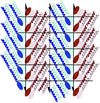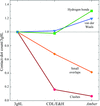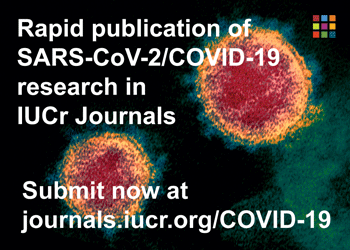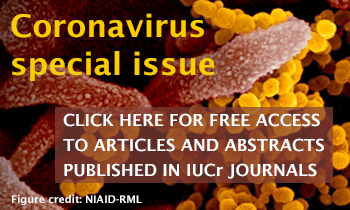issue contents
January 2020 issue
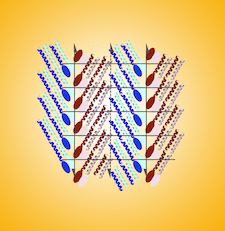
Cover illustration: Packing illustration of a crystal with P21 symmetry [Zheng et al. (2020), Acta Cryst. D76, 41–50].
CCP4
Open  access
access
 access
accessImprovements to the sensitivity of the search for suitable molecular-replacement search models in SIMBAD through the use of Phaser and an ensemble-based model database are reported.
Open  access
access
 access
accessAn automatic pipeline based on molecular-replacement phases is described for the automatic crystal structure solution of protein and DNA/RNA molecules.
Open  access
access
 access
accessImproved coordinate error estimates are proposed for the X-ray and NMR models used for maximum-likelihood-based molecular-replacement phasing.
research papers
Extracellular serine protease (Esp) is a glutamyl endopeptidase from Staphylococcus epidermidis that plays a key role in inhibiting the growth and formation of Staphylococcus aureus biofilms. Here, crystal structures of the Esp zymogen and its N-terminal locked variants are presented, and details are given of the role of the unusually long N-terminus in the activation and function of Esp.
The C-terminal coiled-coil domain of transient receptor potential channel TRPP3 in space group P321 (PDB entry 4gif) is re-refined with restraints from quantum chemistry using Hartree–Fock theory.
Open  access
access
 access
accessThe full Amber force field has been integrated into Phenix as an alternative refinement target. With a slight loss in speed, it achieves improved stereochemistry, fewer steric clashes and better hydrogen bonds.
A hybrid method has been developed to determine crystal structures by utilizing cryo-EM maps of homologous proteins.
The catalytic mechanism and the evolutionary characteristics of thioredoxin derived from the extreme halophile H. salinarum NRC-1 were elucidated by X-ray crystallographic analysis, circular-dichroism analysis and enzymatic assays.
PDB reference: N23Q mutant thioredoxin from H. salinarum NRC-1, 6kil
addenda and errata
Open  access
access
 access
accessThe article by Caldararu et al. [(2019), Acta Cryst. D75, 368–380] is corrected.


 journal menu
journal menu















